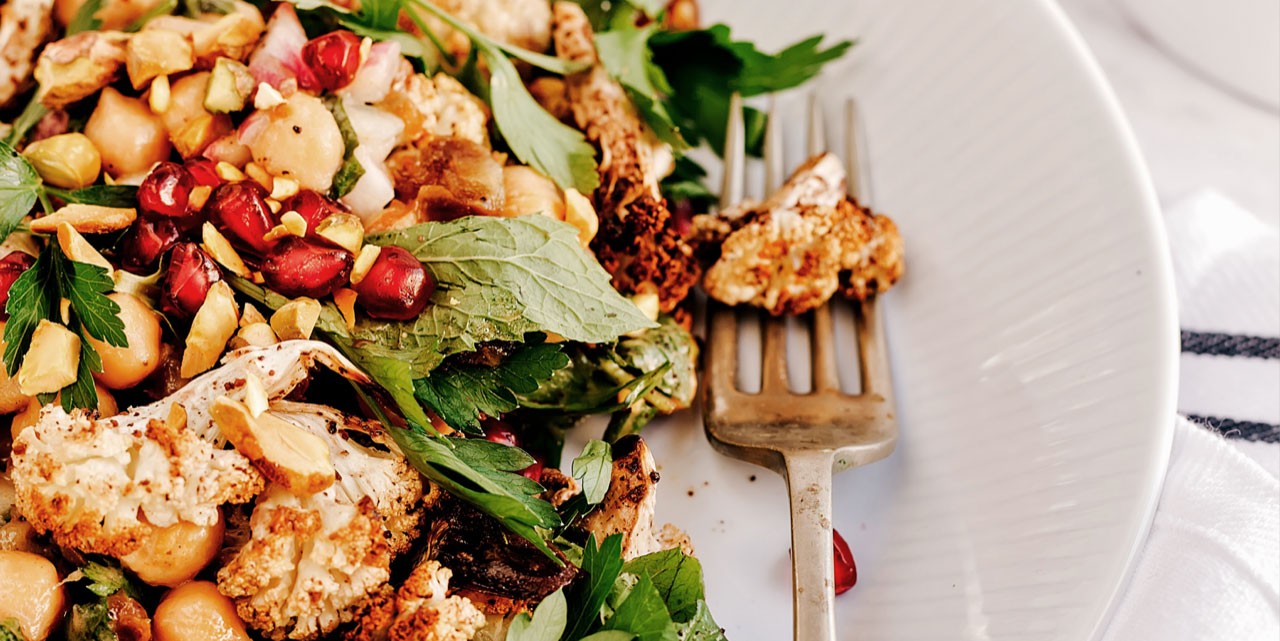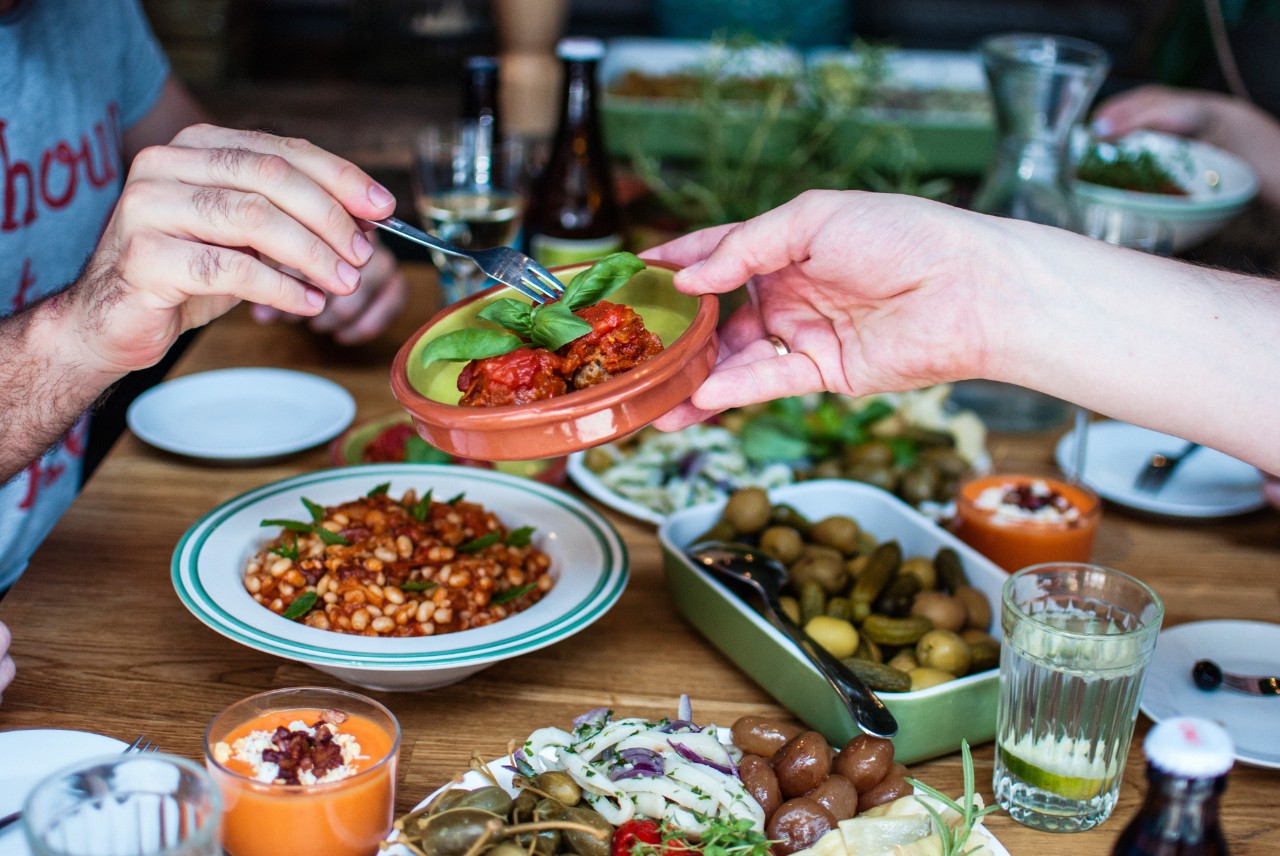Anti-inflammatory foods – a healthy indulgence
Be it broccoli, blueberries or walnuts, certain foods can inhibit inflammation in our body. But beware, not every food is a good choice.

Not all dietary trends make sense from a scientific point of view, but anti-inflammatory nutrition is indisputably more than just hype. Numerous studies based on decades of research confirm that while certain foods can boost inflammatory processes, others have an anti-inflammatory effect. Why is this knowledge so important? Hidden inflammations can make you ill. When they smoulder for a long time like hidden fires, the immune system gets out of control. In certain cases, this can lead not only to inflammatory diseases such as rheumatism or arthritis, but exacerbate diseases such as diabetes, arteriosclerosis, Alzheimer’s or cancer.
How does inflammation arise in the body?
Inflammation is a natural reaction of the immune system that is not bad per se. On the contrary: inflammation is a sign that the body wants to get rid of pathogens or harmful substances - and in the best case scenario, it manages to do so. The process only becomes a problem when the body maintains the inflammatory processes and it continues to smoulder undetected. The first signs of this are persistent fatigue, joint pain when you get up in the morning, or poor concentration and memory. Over time, hidden inflammations can lead to chronic diseases. Type 2 diabetes, for example, is an inflammatory process that has got out of hand and, over time, paralyses entire nerve pathways if nothing is done about it.
The causes of inflammation range from autoimmune diseases and pathogens to belly fat. While genetic and lifestyle factors always play a role, certain foods fuel inflammation while others strengthen our immune system.
Foods that work
Those who’re keen to ensure an anti-inflammatory diet should cut back drastically on meat, sugar and simple carbohydrates. Simple carbohydrates such as white flour or sugar cause blood sugar to spike rapidly, which stresses the body and can eventually lead to inflammation. Another reason to use carbohydrates in moderation is that the body’s own fat, especially belly fat, produces pro-inflammatory hormones. So it’s important to avoid anything that increases abdominal girth. What’s more, simple carbohydrates are empty calories that barely fill you up. However, this doesn’t mean you should avoid carbohydrates altogether. It’s just that whole-grain products are the better choice. If someone suffers from digestive problems, fatigue, joint and muscle pain, it may also be advisable to avoid gluten-containing foods and replace them with quinoa, amaranth, millet, buckwheat and pulses.
In many respects, the anti-inflammatory diet corresponds to the famed Mediterranean diet. This doesn’t mean pasta, pizza and ice cream but rather the traditionally simple diet of southern Italy and Greece, especially Crete, which consists of fresh fruit and vegetables, fish and seafood, plenty of olive oil, nuts and seeds, as well as lots of herbs and garlic. Meat is rare, and dairy products are not present in vast quantities either. The only sweetener used is honey.
Meat promotes inflammation
Numerous studies attest to the fact that red meat is pro-inflammatory. One reason for this is arachidonic acid. This is an essential omega-6 fatty acid which is responsible for inflammation when consumed in high concentrations. Unhealthy saturated fatty acids and trans-fats are also found in red meat and sausages. This doesn’t mean that an anti-inflammatory diet has to be purely vegetarian. But meat should only be part of the menu in small quantities and not on a daily basis, and the quality and preparation of the meat also play a role. Sausages and ready-made products in particular have a high proportion of unhealthy, inflammation-promoting fats and often also a high salt content.
Not all fats are the same
If you want to lose weight, you have to give up fat. That’s a widespread misconception. Not all fats are the same. Healthy fats are a central component of an anti-inflammatory diet. Polyunsaturated fatty acids, namely the various omega-3 fatty acids, have a strong anti-inflammatory effect. They neutralise the harmful arachidonic acid that is usually ingested with meat and cheese. Omega-3 fatty acids are found in fatty fish such as mackerel, salmon, trout and herring. An anti-inflammatory diet also includes flax, chia and hemp seeds, as well as walnuts, rapeseed oil, wheat germ oil, tofu and green leafy vegetables, because these foods also contain omega-3 fatty acids. Olive oil, olives and avocados – monosaturated fatty acids – also help to reduce inflammation.
Which vegetables are anti-inflammatory?
Plant-based nutrition is vitally important. On the one hand, plants don’t contain arachidonic acid, while on the other, vegetables and fruits provide valuable dietary fibre and are packed with vitamins, minerals and above all valuable secondary plant compounds. These ‘plant antioxidants’ are anti-inflammatory and protect the body from attack by the free radicals that damage cells. Scientists have already discovered thousands of different secondary plant substances. Plant pigments such as anthocyanins, carotenoids and flavonoids play a particularly important role.
-
Flavonoids: strong red, blue, bright yellow and purple
Flavonoids are found in broccoli, celery and onions, for example.
-
Carotenoids: yellow, orange, red and green
Carotenoids are found in chillies, avocados, carrots, tomatoes, fennel and lettuce.
-
Anthocyanins: red, purple, dark blue and black
Anthocyanins are found in aubergines, beetroot, red cabbage and red onions.
To benefit as much as possible from all these anti-inflammatory substances, the food served should look as colourful as possible – in line with the motto ‘eat the whole rainbow’.
Which fruit is the ideal anti-inflammatory?
The same applies to fruit as to vegetables: your plate should be as colourful as possible. Since fruits contain a lot of sugar, you shouldn’t eat too much of them. The rule of thumb is that for a daily amount of at least three handfuls of vegetables, you should eat two handfuls of fruit at most. Secondary plant compounds are found, for example, in apples and grapes (flavonoids), in apricots and melons (carotenoids) and in blackcurrants, blackberries and blueberries, cherries, dark grapes, plums and damsons (anthocyanins). The heroes among the anti-inflammatory foods are berries, especially blueberries, which have the highest antioxidant power. A study has shown that regular consumption of blueberries significantly reduces the risk of developing dementia.
- Broccoli contains numerous secondary plant compounds in very high concentrations and is particularly effective against inflammation.
- All types of cabbage such as Brussels sprouts, cauliflower, white cabbage, red cabbage, kale and palm kale are explicitly considered anti-inflammatory vegetables.
- Onion, garlic, leek and chives contain substances that have antioxidant, antibacterial and anti-inflammatory effects.
- Ginger and turmeric contain anti-inflammatory plant substances.
- Blueberries, raspberries and blackberries are bursting with antioxidants.
- Walnuts, flax, hemp and chia seeds are important sources of omega-3 fatty acids.
- Fatty fish such as mackerel or salmon contains another form of omega-3 fatty acids.
- Olives, olive oil, rapeseed oil and avocados are valuable in anti-inflammatory diets because of the monounsaturated fatty acids.
- Aromatic herbs such as oregano, basil, rosemary, marjoram, thyme and sage also have an anti-inflammatory effect.
Are milk and dairy products pro-inflammatory?
It’s a fact that milk and dairy products contain arachidonic acid. However, while many studies indicate that milk does not drive inflammation, or even has anti-inflammatory properties, others come to the opposite conclusion. The problem in this discussion is that most of the studies were paid for by the dairy industry. Bas Kast, author of “The Diet Compass”, mentions that the anti-dairy faction also distorts data to support the harmfulness of milk. According to Kast, it’s therefore difficult to gain an objective overview.
The answer to the question of whether dairy products cause inflammation remains open and is the subject of heated debate. The truth probably lies somewhere in the middle. A dairy-free diet is quite balanced and healthy – after all, the majority of the world’s population has no milk in their diet. “There are healthier sources of calcium than milk,” writes Bas Kast, “such as yoghurt and cheese, as well as wholemeal products and green vegetables, especially kale and broccoli.” On the other hand, those who like milk don’t necessarily have to give it up. There are no clear arguments against consumption of milk in moderation – preferably organic milk from pasture-raised cows.
Rheumatism, psoriasis, and Crohn’s disease – nutrition for inflammatory diseases
Anti-inflammatory foods are useful both for prevention and treatment. People affected by rheumatism, arthritis and psoriasis, as well as inflammatory bowel diseases such as Crohn’s disease, benefit greatly from an anti-inflammatory diet. It can relieve pain, correct nutrient deficiencies and generally reduce inflammation. The diet should be adapted to complement the respective therapy, with those affected advised to seek individual advice from experts.
As important as an anti-inflammatory diet may be, it’s not something you should fixate on. Lifestyle also plays an important role: stress, lack of exercise, smoking and consuming alcohol in large quantities encourage inflammation. In his book “The Anti-Inflammatory Diet”, Martin Kreutzer also writes that “the best medicine is still the combination of healthy eating with exercise, water, fresh air and sufficient restful sleep.”
- The science journalist Bas Kast has looked into thousands of studies: “The Diet Compass. The 12-step guide to science-based nutrition for a healthier and longer life”, Bas Kast, 2022
- A compact, user-friendly guide to anti-inflammatory nutrition – not only for rheumatism sufferers: “Tasty and effective. Nutrition for inflammatory rheumatism”, Swiss Rheumatism League, 2022
- An overview of the theoretical basis combined with healthy and tasty recipes: “The Anti-Inflammatory Diet”, Martin Kreutzer and Anne Larsen, 2021 (5th edition)


